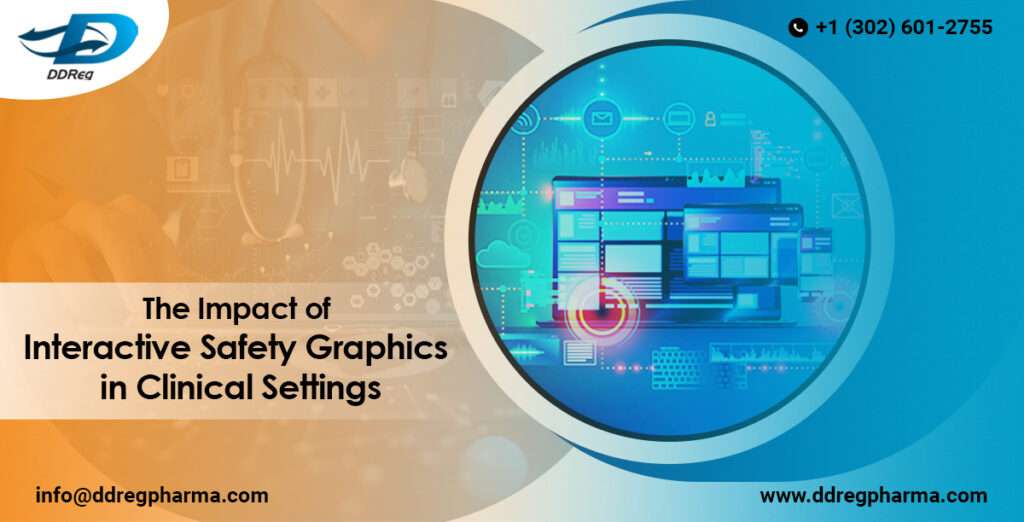The world of regulatory submissions is transforming where static documents and data tables are slowly giving way to a more dynamic approach – interactive safety graphics. Traditional methods of presenting this data have evolved significantly with the advent of interactive safety graphics. These dynamic tools are transforming the way submission content is reviewed, how clinical study reports (CSRs) and trial data are analyzed, and how information requests are addressed.
According to an article by Dr. James Buchanan and team, the idea of interactive graphics and related tools is familiar to programmers and statisticians but not so much with end-users including reviewers. Hence, the interactive safety graphics (ISG) task force of the joint safety working group, ASA-DIA, highlighted the need for a more collaborative approach- one that brought together clinicians, data scientists and statisticians.
What should key features of an interactive safety graphic tool be?
According to the article the ISG members highlighted that an interactive safety graphic tool should be freely accessible and available to all stakeholders including regulatory authorities.
It should be easy-to-use so that even non-technical folks can use it as needed. A web-based application would also minimize any technical requirements, and it should encourage collaboration between statisticians and clinicians. Most importantly, it should be easily configurable and applicable to various stakeholders within the industry.
What role do interactive safety graphics have in reviewing clinical study reports and trial data?
Interactive safety graphics can greatly improve the review of Clinical Study Reports (CSRs) and trial data by minimizing the time to understand and verify the presented data, making it easier to review. They automate some parts of the process of verifying information, hence ensuring uniformity and reliability.
Moreover, incorporating review software enriched with interactive graphic capabilities such as SAS Visual Analytics or R Shiny applications into workflow makes reviewing much more seamless and effective. This allows regulators to concentrate on critical analysis rather than interpreting data. Also, interactive graphics enable detailed safety analyses through tools for visualizing and analyzing adverse events so that regulators can examine their incidence, severity and duration across different patient populations and treatment arms. This perspective is useful when making decisions about the safety profile of a drug.
How do interactive safety graphics help in better addressing information requests?
Interactive safety graphics enable sponsors to respond to queries more quickly and accurately. When regulators request additional information or clarification on specific data points, sponsors can use interactive tools to generate the required visualizations and analyses promptly.
These tools also enhance communication between sponsors and regulators. Interactive displays can be shared during meetings and discussions, providing a common visual reference that aids in mutual understanding and decision-making.
Regulators can explore data comprehensively, going beyond the predefined analyses. This capability is particularly useful when unexpected safety signals or trends emerge during the review process. Interactive graphics provide the flexibility to investigate these signals thoroughly without the need for additional data submissions.
Conclusion
Interactive safety graphics have shown major potential within the clinical setting. Important functions and features of these tools involve making it easier for the clinicians to understand exactly what is going on as well as live data interpretation & analysis among other functions in terms of enhancing clarity and comprehension, review of CSRs and trial data, and provision responses to information requests.
As times change, there will be increasing adoption of interactive safety graphics; this will result in more efficient drug safety evaluations.
DDReg brings over 15 years of experience in pharmacovigilance including establishing robust systems to ensure compliant and efficient safety evaluation. Reach out to our experts for end-to-end pharmacovigilance services: Read more from our global PV experts: Electronic Submissions for Investigational New Drug Safety Reports – DDReg Pharma

